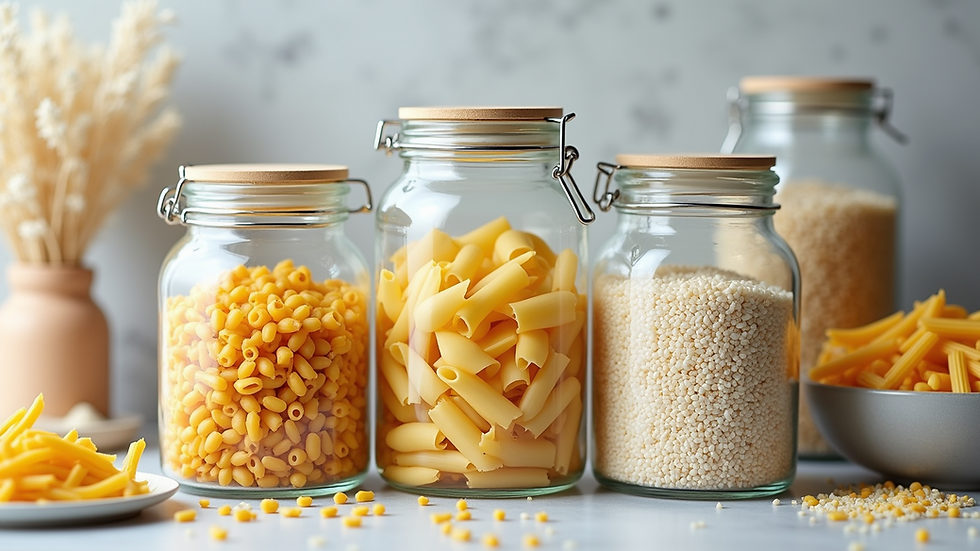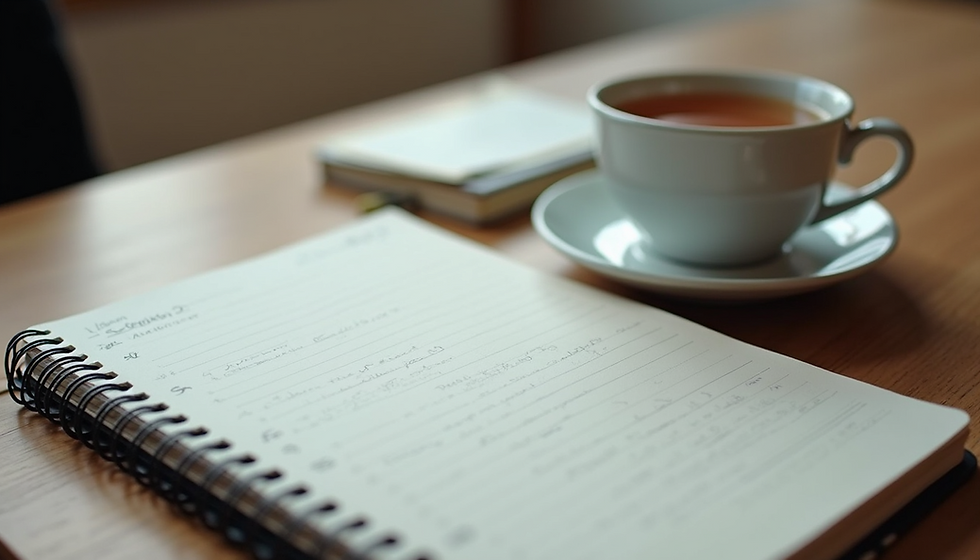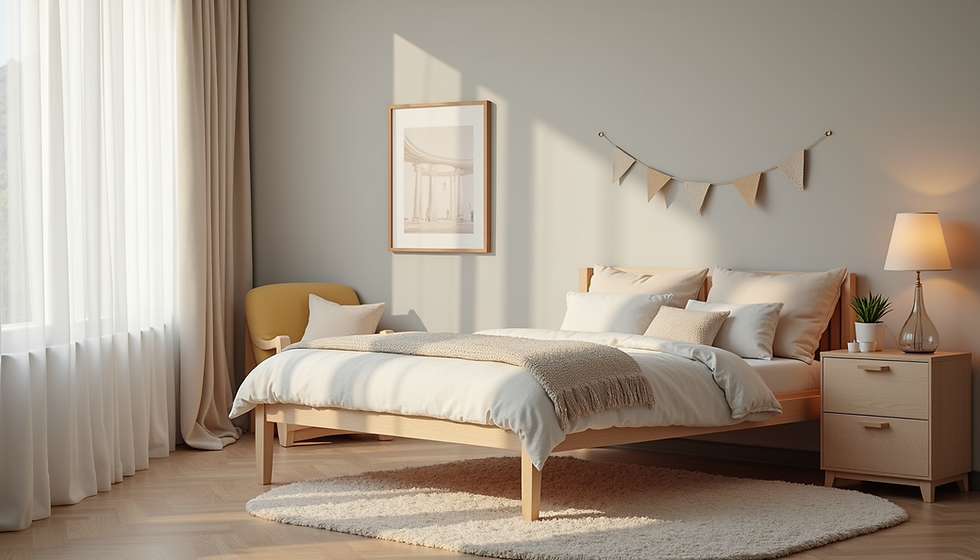Is Adding a Pantry to Your Small Kitchen Worth It or Just a Trendy Fad?
- Aug 24
- 5 min read
Updated: Sep 1
Are you having trouble finding space in your kitchen? A pantry might just be the solution you need. With the right pantry, you can transform a small kitchen into an organised haven. But is the investment really worth it? In this blog post, we will look at the advantages of adding a pantry, how it boosts your kitchen’s usability, and whether it increases your property's value. We will also share practical tips for creating a pantry in a small kitchen and discuss the costs involved. Let's jump in!
The Value of a Pantry
One big question homeowners ask is whether a pantry adds value to their home. Real estate experts agree that a well-organised pantry can attract potential buyers. In the UK, homes with a pantry may see an increase in value of approximately 5-10%. In the US, the estimated increase ranges from 6% to 8%.
This boost in value can be linked to the rise in home cooking and meal planning trends. Since the pandemic, many of us have turned to home-cooked meals, making functional spaces like pantries highly desirable. In fact, houses that showcase such practical features are more appealing to buyers looking for efficient, organised living spaces.
Is a Pantry Useful?
Having a pantry offers numerous benefits. First, it provides extra storage, which is essential in keeping a kitchen clutter-free. For example, buying staples in bulk—like a 20-pound bag of rice—can lead to significant savings over time. Moreover, a dedicated food storage area simplifies meal prep, allowing you to plan your meals around what you already have.
Research shows that we waste about 30-40% of the food supply, partly due to poor organisation. A pantry can help reduce waste by keeping track of what you have on hand and ensuring you rotate your food items properly.
Adding a Pantry to a Small Kitchen
Think you can’t add a pantry because your kitchen is small? Think again. There are creative ways to incorporate a pantry without sacrificing space. For example, converting an understairs cupboard into a pantry could be your best bet. Often an overlooked space, it can become a practical storage area with relatively few changes.
Converting the Understairs Cupboard
To convert your understairs cupboard into a pantry, start by decluttering. Remove items that don’t belong, then evaluate how best to use the space. Installing shelves can help utilise vertical space effectively. Adding labelled clear storage bins will help you group similar items, making them easier to find.

Cost of Adding a Pantry
Let's look at the costs involved with creating a pantry. In the UK, transforming an existing area into a pantry can cost anywhere from £500 to £2,000, depending on size and materials. In the US, expect to invest between $600 and $2,500.
While the upfront cost may seem high, consider this: a well-designed pantry can significantly enhance your kitchen's functionality—and its resale value. Research shows that a well-planned kitchen remodel can return 70-80% of its costs when selling your home.
What to Keep in Your Pantry
A well-stocked pantry is crucial for efficient meal prep. Here are some essential items every pantry should include:
Canned Goods: Opt for soups, vegetables, and fruits for quick meal solutions.
Grains: Stock up on rice, pasta, and quinoa, all of which can fit into various cuisines.
Baking Supplies: Flour, sugar, and baking powder are must-haves for all baking enthusiasts.
Spices and Herbs: A variety of spices can elevate simple dishes and expand your cooking repertoire.
Snacks: Healthy snacks should be easily accessible to keep you energised throughout the day.
Organising Your Pantry
A neat and tidy pantry saves time and reduces stress. Here are some straightforward tips for keeping your pantry in order:
Categorise Items: Group similar foods together, such as grains, snacks, and canned goods.
Use Clear Containers: Transfer dry ingredients into airtight jars. Not only does this keep food fresh, but it also looks appealing.
Label Everything: Clearly labelling containers and shelves makes finding items a breeze.
Utilise Vertical Space: Adding shelves or using stackable bins can maximise storage opportunities.

Advantages and Disadvantages of Decanting Dried Foods
Decanting dried foods into storage jars can be beneficial, but it’s not without its drawbacks.
Advantages
Freshness: Airtight containers can keep foods fresher for more extended periods by preventing moisture and pests.
Visibility: Clear jars allow you to see contents at a glance, simplifying meal planning.
Aesthetics: A cohesive, organised look enhances the visual appeal of your pantry.
Disadvantages
Cost: Investing in quality storage jars can add to your overall budget.
Space: Depending on the size of your jars, you may sacrifice storage space.
Time: Transferring food can take time, especially if you have numerous items to move.
Using Baskets to Organise Foods
Baskets provide another practical way to keep your pantry orderly. Here’s how to use them effectively:
Choose the Right Size: Make sure baskets fit on your shelves and can hold the items you want to store.
Label Baskets: Just like jars, labelling baskets helps you quickly find what you need.
Use Different Colours: Different colours can visually categorise items, making it easier to navigate your pantry.
Practical Tips for Creating a Pantry
Creating a pantry in a small kitchen can be a fun and rewarding project. Here are some practical tips to help you get started:
Assess Your Space
Before you begin, take a good look at your kitchen. Identify areas that can be repurposed for pantry use. This could be an unused corner, a closet, or even a section of your kitchen cabinets.
Plan Your Layout
Sketch out a plan for your pantry layout. Consider how you will arrange shelves, bins, and jars. Think about accessibility and how often you use certain items.
Invest in Quality Storage Solutions
Quality storage solutions can make a big difference. Look for shelving units that fit your space well. Consider adjustable shelves for flexibility as your needs change.
Keep It Clean
Regularly clean your pantry to keep it organised. Check for expired items and remove them promptly. A clean pantry is not only more pleasant to use but also helps you keep track of what you have.
Wrapping It Up
Adding a pantry to your small kitchen can significantly enhance both your cooking experience and your home’s value. Whether you’re converting an understairs cupboard or planning a new area, a pantry helps you stay organised and simplifies meal preparation.
While there are costs to consider, the potential benefits—including increased property value and easier meal planning—make this trend a worthwhile investment. If you're looking to elevate your kitchen experience, adding a pantry could be just what you need!













I converted my under stairs cupboard. It contained junk and took me half a day to sort out. I organised what I wanted in the pantry, made a skitch and my husband who is good at DIY made my dreams come to life. It cost only £100 for the materials. If you've got someone who is handy it can greatly reduce the expense.